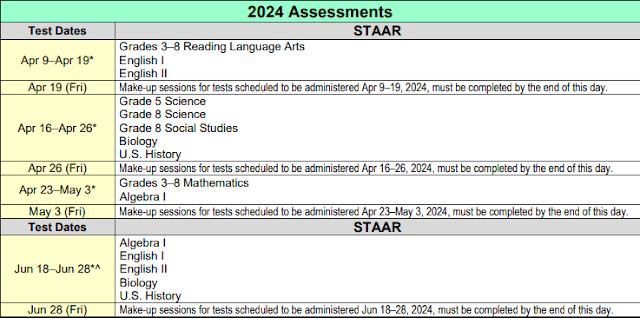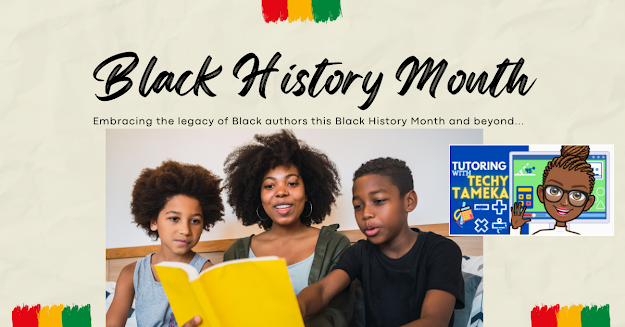How To Prep Texas Students for the Online Math STAAR Exam- Tutoring with Techy Tameka's #1 Stress-Free Strategy
Hello, parents! Today, Techy Tameka, founder of Tutoring with Techy Tameka LLC, is going to share her top stress-free strategy she teaches to all of her Tutor Techs when it comes to prepping or the STAAR exam. This strategy has been the key to helping their virtual students reach high scores on the exam as well as some even reaching mastery year after year. She'd have to right a book to share the secrets to conquering all of the subject areas, but if you want to help your child master all areas year after year, then enroll to get your child assigned a dedicated private Tutor Tech that will get them squared away! So, today she will specifically target how to effectively pass the Math STAAR exam with flying colors. Let's dive into this topic because we are aware test dates are approaching in the near months, and every day and every week matters on taking the proper approach to prepping students to achieve mastery.
The State of Texas Assessments of Academic Readiness, or STAAR, is an integral part of your child's academic journey. This standardized test is designed to evaluate students' understanding and mastery of essential skills in various subjects.
Of course, you may be wondering why does the STAAR exam still exist, especially with all of the chaos of COVID, and what role does it play in shaping educational outcomes during these unprecedented times?
Well, the STAAR exam serves several purposes. First and foremost, it helps assess the overall academic progress of students, providing educators and parents with valuable insights into areas of strength and areas that may need additional attention. The results also play a role in determining the effectiveness of educational programs and curricula.
As for the timing in 2024, the STAAR exam typically takes place annually in the spring. According to the Texas Education Agency's (TEA) Student Assessment Testing Calendar, the exam is planned to take place throughout April 9th-June 28th. In 2024, the exam dates may vary slightly depending on grade level and subject. (See calendar for exact grade level dates)
How to Navigate the STAAR Math Reference Material for Success
According to TEA (2023), the new redesigned STAAR "moves assessments online to provide robust accommodations for students with specific learning needs." TEA (2023) further explains how the shift to online administration enables students to receive accommodations similar to those provided in the traditional classroom setting, ensures quicker test result delivery, enhances overall test operations, and introduces the incorporation of new non-multiple-choice questions. Therefore, all students in 2024 will undergo online assessment, with the exception of those taking the STAAR Alternate 2 assessment and students necessitating accommodations that cannot be facilitated in an online format.
Though our learners may be testing on various subject matters: Reading Language Arts, Science, Social Studies, Biology, U. S. History, English, Mathematics, and Algebra I, this blog will target specifically the Math Reference Tools per grade level. For Reference tools for let's target the number one key testing strategy that can be drilled not only in the classroom, but conveniently at home.
Step 1: Visit TEA's STAAR Reference Materials (click Mathematics Resources > Additional Resources) and download the STAAR Reference Material relevant to your child's grade level.
Step 2: Continue reading what your child needs to target based on their grade level to ease through the Math STAAR.
Though this reference sheet is nothing new, this approach to test prep, may be new for many. It's a wonder why teachers don't provide this reference sheet throughout the school year during their Math class assessments. This would normalize how students don't need to memorize the formulas, or conversions, as this provided to them during the STAAR exam. So the more they can ease their minds and know this information is given, then they can gain confidence on actually learning how to use them rather than focusing on memorization.
This blog will provide a breakdown of the STAAR reference material per grade level, which is the most valuable piece of information parents and educators can provide as the best prep tool for learners grades 3-HS. As the dates get closer and closer, learners run out of time to drill concepts and new skills. It can only become overwhelming and stressful for such little minds. So, the best remedy to success during the exam, is teaching them how to properly utilize the tools that are already provided to them by the TEA, such as the online testing tools and the reference sheet provided to each grade level. Here you will learn exactly what each grade level need to know to fully navigate the reference material with ease and confidence.
Fundamental Foundations (Basic Arithmetic, Plae Value Mastery, Measurements, and Tackling Word Problems): (Grades 3-5)
Grade 3 Math
Grade 4 Math
Grade 5 Math
Advanced Concepts and Problem-Solving (Ratios and Proportions, Equations and Inequalities, and Geometry Insights): (Grades 6-8)
- Grade 6 Math
- Grade 7 Math
- Grade 8 Math
Algebra I
What Can Educators and Parents Do To Prep Learners for Problem-Solving and Critical Thinking Strategies for All Grade Levels?
Test-Prep Practices to Implement for Parents and Educators:
Problem-Solving Strategies & Ideas
Guided Practice Sessions:
- Facilitate guided practice sessions where students can apply step-by-step problem-solving approaches.
- Provide ample opportunities for students to practice breaking down complex problems into manageable steps.
Visual Aid Integration:
- Encourage the use of visual aids during practice sessions to enhance understanding.
- Provide resources and tools that support the use of diagrams and charts to solve problems.
- Organize interactive group activities that promote collaborative problem-solving.
- Foster an environment where students can discuss problems, share strategies, and learn from one another.
- Emphasize the importance of recalling and applying previously learned concepts to solve current problems.
- Reinforce the idea that building on prior knowledge is a valuable testing strategy.
- Integrate discussion-based learning approaches to prompt critical thinking.
- Encourage students to engage in discussions that involve asking and answering "why" and "how" questions related to test problems.
Critical Thinking Prompts & Ideas
Discussion-Based Learning:
- Integrate discussion-based learning approaches to prompt critical thinking.
- Encourage students to engage in discussions that involve asking and answering "why" and "how" questions related to test problems.
Exploration of Alternative Solutions:
- Incorporate activities that challenge students to explore multiple solutions to a problem
- Foster an environment that values diverse perspectives and solutions.
Predictive Thinking Exercises:
- Introduce exercises that require students to make predictions and form hypotheses before encountering test questions.
- Develop scenarios that stimulate forward-thinking and planning in test preparation.
Comparative Analysis Exercises:
- Include exercises that prompt students to compare and contrast different elements of test problems.
- Equip students with critical evaluation skills by encouraging them to identify patterns in various scenarios.
Real-World Application & Strategie
Contextual Test Practice:
- Develop test practice materials that present problems in a real-world context.
- Help students see the practical application of test-related concepts in everyday scenarios.
Application Beyond the Classroom:
- Encourage discussions on how test-related knowledge can be applied beyond the classroom.
- Emphasize the practical utility of the skills being tested in the STAAR exam.
Consideration of Test Conditions:
- Guide students on considering test conditions and constraints during practice.
- Discuss strategies for adapting problem-solving approaches based on the parameters of the test.
Career-Relevant Problem Solving:
- Draw connections between test-related problem-solving skills and their relevance in various careers.
- Illustrate how the skills tested in STAAR exams align with future educational and professional pursuits.
The biggest mistake educators make is cramming so much in such little time. In actuality, it's about utilizing the correct knowledge effectively during the test. Ultimately, the significance of familiarizing your child with the STAAR reference material is to provide the best prep strategies that are simplistic and not overwhelming for young learners. Remember, the reference material is a powerful tool, and knowing how to navigate it can significantly impact your child's ability to find solutions efficiently.
Parents, we hope this blog post has provided valuable insights into the essential math skills required for success in the Math STAAR test. Whether your child is mastering the basics of Math or Algebra, these skills are the building blocks of their mathematical journey. If you take a close look, each year, though there are new skills, many concepts are drilled and repeated to ensure understanding. Note, the STAAR reference material—it's not just a booklet; it's a guide that can lead your child through complex problems with confidence. Thank you for taking the time out to read this week's blog, and we wish your child the best of luck as they navigate confidently through their math problems after utilizing these tips to help them master the digital Math STAAR test!
Share this blog and be sure to leave a comment if you're a parent or educator!
References
1. Texas Education Agency (n.d.). STAAR Mathematics Resources. TEA. Retrieved January 31, 2024, from https://tea.texas.gov/student-assessment/testing/staar/staar-mathematics-resources
2. Texas Education Agency (n.d.). STAAR Resources. TEA. Retrieved January 31, 2024, from https://tea.texas.gov/student-assessment/testing/staar/staar-resources













.png)
Comments
Post a Comment